The oil and gas industry relies on an extensive network of equipment and machinery, often more than 15 years old. Failure to maintain these assets can lead to unplanned downtime, which is costly for the industry.
On average, an oil and gas company experiences 27 days of disruption each year, which translates to a staggering US$38 million in lost revenue. Even a seemingly insignificant short outage of 3.65 days can result in losses of up to US$5 million.
Therefore, regular inspection and maintenance activities are essential to prevent unplanned downtime and ensure operational performance.
Meticulous preparation and planning
Unlike most other industries, the maintenance of upstream oil and gas assets is challenging due to a combination of factors, particularly remote locations and safety risks, as well as harsh climates, ageing infrastructure, stringent environmental regulations and reliance on contractors.
Preparation and planning are therefore essential for effective maintenance in this complex landscape.
- Preparation and planning address the logistical challenges of deploying crews across vast distances and harsh terrains for maintenance. Planning ensures that critical materials and equipment are available on time to avoid delays and minimise downtime, and that personnel movements and transport routes are precisely coordinated in advance to optimise response times.
- The oil and gas industry operates under strict safety regulations. Maintenance planning ensures that critical permits and approvals are obtained in advance, enabling to be carried out smoothly. For example, lockout – tagout (LOTO) permits ensure that equipment is isolated and de-energised prior to maintenance to prevent accidental energisation; height safety permits are critical as they require the use of correct scaffolding and harnesses at elevated locations on offshore platforms; and confined space permits allow personnel to enter confined spaces, to ensure atmospheric monitoring and emergency procedures for safe working. Obtaining the required permits well in advance is important for efficient maintenance execution. Delays in obtaining permits can affect maintenance schedules and potentially affect operational efficiency.
- Due to its complexity, maintenance in the oil and gas industry often relies on third-party contractors. With sufficient preparation and planning, contractors will be aware of existing safety protocols for maintenance activities, as these vary from organisation to organisation, and will be aware of emergency response procedures that could minimise the impact of unexpected incidents.
Tools to boost maintenance productivity
Careful planning and preparation are not just a best practice for effective upstream oil and gas maintenance, it also paves the way for productivity gains and operational excellence.
Based on Renoir Consulting’s 30 years of experience, here are the tools that can optimise maintenance:
1. Reliability-based maintenance planning
This is a data-driven approach to ensuring reliable equipment operation for safety, production, and cost control purposes. Before developing maintenance schedules for equipment, facilities, and other assets, maintenance planners analyse historical data, equipment characteristics, and potential failure modes.
Based on this data, the schedule will prioritise maintenance activities based on criticality and operational needs and determine the frequency and timing of planned maintenance activities to prevent critical failures and maximise equipment uptime.
This proactive approach reduces the risk of unexpected breakdowns, improves operational efficiency, and minimise maintenance costs, creating a win-win situation for both safety and profitability.
2. Inventory planning and materials management
This process requires the systematic identification, procurement and management of the necessary materials, spare parts, and equipment for maintenance activities. It begins with forecasting maintenance needs based on scheduling process (see below) and other operational requirements.
Inventory levels are assessed, and reorder points are established to ensure sufficient stock availability while minimising excess inventory. Procurement strategies should be in place to guide the team in obtaining materials and equipment from suppliers, taking into account factors such as lead times, pricing, and quality standards.
Maintenance planners need to work closely with operations and engineering teams to ensure that the right materials and equipment specifications are met to maintain operational integrity, safety standards, and timely availability during planned maintenance.
3. Work standards and scheduling
Maintenance planners need to develop a standard operating procedure and a detailed schedule outlining when each task will be performed, who will carry it out, and what resources will be required. This may involve assigning specific dates and times for maintenance activities, allocating personnel and equipment, and coordinating with other departments or contractors as necessary. The schedule needs to be communicated to all stakeholders to ensure that everyone is on the same page and, that all planned activities can be completed ahead of schedule or on time.
4. Skills Flexibility Matrix
This matrix reviews the skills and competencies required for different maintenance tasks within the team, categorising them according to levels of competence and specialisation areas.
It helps to ensure the readiness and adaptability of the workforce to changing operational requirements. It also identifies skill gaps and redundancies and guides targeted training to upskill your team. In addition, the matrix enables effective resource allocation by matching personnel to technical or specific maintenance tasks that match their expertise, maximising efficiency and minimising downtime.
To ensure competence in a particular maintenance task, it is important to assess the number of people required to complete the task, as this variable influences the need for on-the-job training.
Putting the processes together
Achieving consistent, daily productivity from maintenance technicians depends on thorough preparation. This includes creating work schedules, ensuring materials availability, allocating sufficient manpower, and assigning people based on their expertise. In essence, the key is to ensure “the right people, at the right time, with the right materials and skills for the job.”
The implementation of a robust continuous improvement framework will further enhance the above approach. This framework requires collaboration between maintenance planners and managers. It should use short interval control to monitor task completion, ensuring that assigned tasks are completed and targets are met. Regular review of each maintenance cycle is essential for the team to identify areas for improvement. By implementing corrective action plans based on these reviews, the organisation can work towards optimising job standards, crewing requirements and achieving consistent technician productivity.
Are you struggling to maintain high levels of maintenance technician productivity? Then it’s time to improve your maintenance planning and execution processes.








